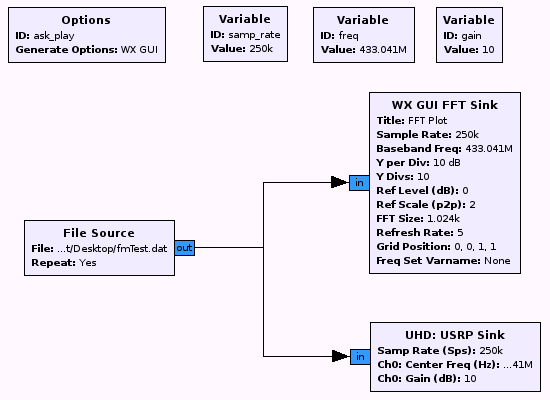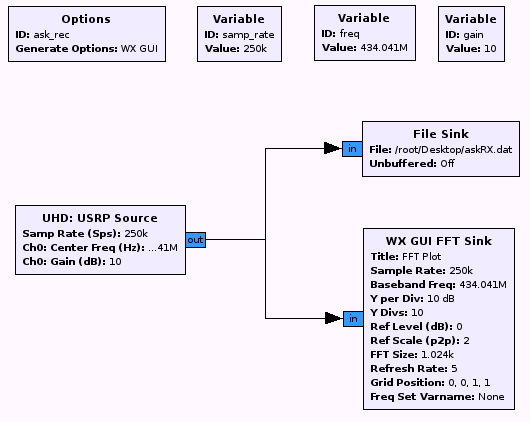Replay attacks are probably the most rewarding tests to perform with a software defined radio — instant gratification (that is, if it works). No need to know the modulation, baud rate, deviation, frequency — well, you definitely need to know the frequency. You get the idea. From a post I submitted a while back with replaying a wireless outlet switch, it took a bit of work. But this is not always necessary, especially if your end-goal is simple replay, and not crafting of custom packets.
Given the aforementioned blog post, I was able to replay the signal for the wireless outlet switch and execute a simple “on” and “off” command (replaying the same command while the device is off, turns it on, and vice-versa). With the power of a USRP (if you can manage to buy one and make it stably work with GNU Radio, good for you), one is able to replay messages recorded by the USRP.
To record a message, one needs to know the frequency, bandwidth, and an educated guess at the appropriate gain (depends on your setup), are all necessary. Below is an example of a flow graph to be used for the recording piece. The source is the radio that is capable of RX, and the sink is the file we will write. We record and write in complex-float (aka complex). We do not need to demodulate, as it will replay as the file is.
To replay this content, we simply point to the source file and direct this to our now sink, which is a radio capable of TX/RX. We keep all of the previously recorded variables the same, otherwise the radio will have a spasm and our results will not be desirable.
Good luck and have fun!


